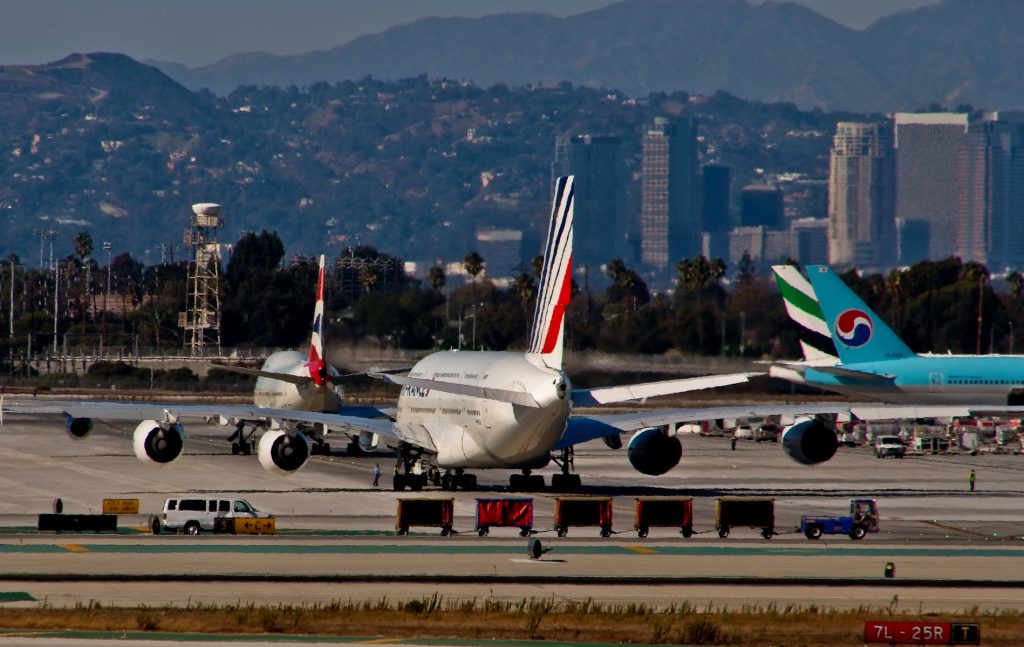In wake of the novel coronavirus (named SARS-CoV-2, the cause of the disease COVID-19) reaching pandemic status, many countries closed their airports to non-residents in an attempt to slow the spread of the virus. But how effective are travel restrictions? And how much does social distancing help? Since this paper was published, we have seen it play out in real life. But how do scientists even study this in the first place?
The authors of this study aimed to develop a way to predict the spread of COVID-19 under certain conditions, including restricted travel. They created a mathematical model, which is essentially a computer simulation using calculations, to predict how the virus would spread using data from the previous SARS (Severe Acute Respiratory Syndrome) virus and MERS (Middle East Respiratory Syndrome) outbreaks. The data they used to represent the world divided people into 3,200 subpopulations in 200 countries that travel between each other. The model also took into account that the percentage of people tested positive for the virus could be as low as 40% of the true infected population.
People in the simulation could be in one of four states – susceptible (able to be infected), latent (infected but can’t spread it yet), infectious (contagious), and removed (recovered, isolated, or dead). They tested several values representing how long it takes to become contagious, how easily it spreads from one person to another, and how many people were traveling, and compared it to real data to find the most accurate values possible.
The researchers compared the predicted amount of cases to the actual number of imported cases of COVID-19 and the real data followed the pattern of the model under the condition that 90% of travel was restricted out of Wuhan. The actual number of reported cases were much lower than predicted however, indicating that only one in four cases were actually detected. According to the model, the Wuhan travel ban reduced cases that spread from Mainland China to other countries by 77%.
Next, the scientists ran the model with travel unrestricted, restricted by 40%, and restricted by 90%. They also compared the status quo, meaning people’s behavior stayed the same, versus a reduction in the ability for new people to become infected by 25% or 50%. These percentages reflect the effects of social distancing and isolating sick people at varying levels of success. Their model predicted that even with travel restricted by 90%, the spread of the virus was only delayed by about two weeks. However, if travel is restricted by 90% and illness transmission by 50%, new cases could be kept very low — less than 1 new case a day per 1,000 people in mainland China.
All models have weaknesses and potential inaccuracies, usually due to the lack of data. This model is no exception, especially due to how new SARS-CoV-2 is. The authors explain that many of the variables related to the disease, like the incubation period (how long it takes to show symptoms), are based on early data and knowledge about similar diseases, such as SARS. They also acknowledge that the model doesn’t take into account differences in susceptibility based on age, for example. This model also removes anyone who had the virus and recovered from the group of people who can become infected, however there are reports that people may be able to become infected twice. It is also possible that the people who appeared to get infected twice just weren’t fully recovered even though symptoms were no longer present, so more research on the virus is needed to fully model how it will spread.
Despite these weaknesses, this model provides information on what is most important for containing the virus. It also makes it clear that reducing transmissibility, aka isolating yourself as much as possible, will massively help prevent the spread of this virus, especially along with travel restrictions in order to avoid new imported cases creating potential epidemic centers.


